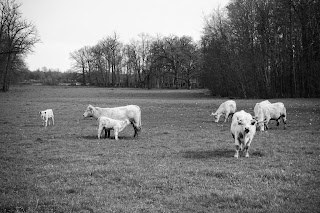 |
© 2014 Chris Terrell
Saw's Burger
|
.jpg) |
| Louis Lassen |
There are burger joints in every town in America, each with its own legion of rabid fans. I’m not talking about the national chains, but the mom and pop joints. (Though everyone has their own favorite fast-food hamburger, even those who say they “don’t do fast-food.” Mine would probably be Five Guys, though I don’t really consider them to be “fast-food;” for true fast-food, I would have to go with Wendy’s.)
 |
© 2014 Chris Terrell
Saw's Soul Kitchen
|
Avondale is an up and coming neighborhood; a casual culinary outpost in an increasingly foodie town. It’s nothing fancy, with maybe eight or nine tables inside and a few tables outside. Saw’s burgers are stacked high with lettuce, tomato, onion, and their special secret sauce. It is similar to other hamburger sauces you would find in Birmingham, slightly spicy and vinegary, similar to barbecue sauce. Hamburger Heaven, Demetri’s, and Milo’s have similar sauces.
 |
© 2014 Chris Terrell
My version of Saw's burger.
|
1. Buy ground chuck that is 80% lean and 20% fat. Please do not get the low fat stuff and don’t, unless you live in California, get ground turkey. This is not a low-fat endeavor, nor should it. The fat holds the burger together and gives it its flavor. Besides, it’s not like you eat them every day do you?
2. Form the patties with a minimum of manipulation. Using your thumbs, put a dimple in each side. This keeps the burger from turning into a blimp while grilling. Generously salt and pepper the burgers (that’s all the seasoning you need—trust me) and place in the fridge for about two hours before you put them on the grill. Do not let them come to room temperature before putting the burgers on the grill.
3. Get that grill has hot as possible. You want Three-Mile Island to look like a ski resort.
4. Put the hamburgers on the grill. (OK, I know this one seems obvious….) Do not take your spatula and press down on the burger. This will force out all the juices and leave you with a dry burger.
5. If your grill has a cover, leave it open. If you close it, you will cook the burger before you can get a good char.
6. Now here’s the hard part. Leave the burger alone. He’s ok by himself. Go grab another beer and talk about the game with your brother-in-law. Once the burger gives a little without sticking, flip it over. Never flip more that once.
7. At this point, place the cheese on the burgers and close the cover—you can even turn the eat down a bit. Once the cheese is good and melted and dripping and about to cause a grease fire, remove and let rest for a few minutes.
8. As for the buns. I like kaiser rolls that I’ve brushed with melted butter and toasted on the grill.
Of course no hamburger is complete without french fries (more on that in a later post), but Lay’s potato chips will do in a pinch. Potato salad or even baked beans aren’t bad either. Of course, the drink of choice is a nice, ice-cold beer, preferably Miller High Life in my humble opinion. (Wine is never an option, even if it is a 1961 Château Cheval Blanc.)
I may run the risk of getting carried away here, but I think it is safe to say that the hamburger may be the perfect food. It’s inexpensive and easy to make. For most men, it’s the first thing they learn to cook, while they stand next to their old man with a beer in his hand who guides him in flipping that hamburger so carefully for the first time. Because the best hamburgers are made on an outdoor grill, they are best grilled in the summer. And when I shuffle off this mortal coil, the last sensations I will record, if I'm lucky, will be the sound of crickets in the early summer evening and the smell of hamburgers on the grill.






+-+Version+2.jpg)
